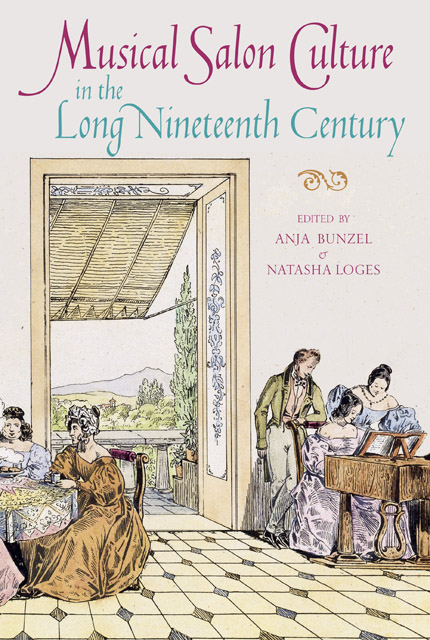6 - Observing Musical Salon Culture in England c. 1800 through the Lens of the Caricature
Published online by Cambridge University Press: 17 January 2023
Summary
An elderly gentleman has slipped and fallen on the pavement. He is in danger of losing his wig, along with his top hat. The contents of his pocket are scattered around him. His right hand is on the ground, clutching his walking-stick; he holds onto a large, perfectly upright thermometer in his left hand. This is a scene in an 1808 coloured etching entitled Very Slippy-Weather by the English caricaturist James Gillray (1756–1815). However, the weather conditions are not the only ‘slippery’ aspect of this scene. Apart from the dog, the crowd behind the man shows little interest in the accident. Their backs to him, they stand shoulder-to-shoulder, looking curiously at a shop window. The headline of the caricature, as well as the lettering above the shop door, reveal it to be the showroom window of the publisher Hannah Humphrey (c. 1745–1818). Since 1797, Humphrey had operated a successful caricature trade on St James’s Street in London’s West End, a well-known address where one could purchase Gillray’s works, as well as those of George Cruikshank (1792–1878), who also ranks among leading illustrators in nineteenth-century England and is considered Gillray’s successor. Furthermore, Humphrey commissioned Cruikshank – whose prints often lampooned the royal family, especially the Prince Regent – to complete a few of Gillray’s designs. The scene depicted is probably not far from reality. At that time, many businesses trading in caricatures were established in the wealthy neighbourhood of the West End. After the abolition of censorship in England towards the end of the seventeenth century, the caricature became increasingly popular. As an instrument of criticism, as well as commentary on political and social life, caricatures seduced crowds of all classes to gather in front of the showroom windows to catch a glimpse of the caricaturists’ latest creations.
Aristocracy, as well as politics, society, fashion, scandals and other circumstances, were fodder for the often-feared caricaturists. The popularity of English caricatures also reached beyond the British Empire. The cosmopolitical magazine London und Paris, the agenda of which was to give insight into the cultural life of the two capitals to the German-speaking world, printed several works by Gillray along with background descriptions.
- Type
- Chapter
- Information
- Musical Salon Culture in the Long Nineteenth Century , pp. 95 - 108Publisher: Boydell & BrewerPrint publication year: 2019



